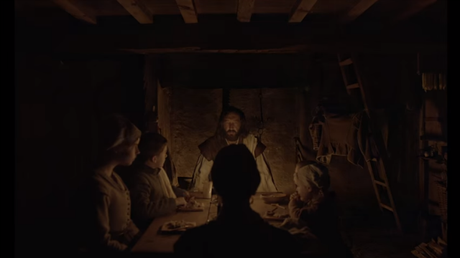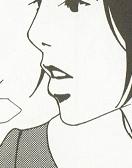
In Jennifer Kent's The Babadook, the horror of the film wasn't necessarily just caused by the titular character, but by the isolation and co-dependence of its two main characters, the mother and her child. They are isolated in their grief and their attempts to put their lives back together, and their normality crumbles even more when the child becomes more difficult to deal with and lives increasingly in a fantasy world, and the mother starts to suffer from severe mental health issues in addition to the grief and the stress that she was incapable of coping with before. Both of them are vulnerable due to their situation, but the mother becomes the danger - and an unmitigated one, because there barely is an outside world - once rationality falls away. Isolated from the outside world, with nothing but each other to trust, they both shape their reality, and the inner fantasy world of the boy, with The Babadook posing a threat, becomes a very real threat once the mother succumbs to it. At that point, the question of which part of it is real and what is simply an expression of a psychotic episode becomes irrelevant: it is real for both main characters, and there is no outside perspective of their perception of reality to make any such judgment.
Isolation and its effect on a family that has no outside point of reference anymore plays a similar role in Robert Eggers' The VVitch, but he expands this version of horror by translating it into a tightly-knit Puritan family in 17th century New England, a family that was cast out from its community for an unnamed transgression (presumably, William, the head of the family, interprets the doctrines of their faith differently than the leading figures in the colonial village). The family now lives isolated on the verge of a forest, depending on a failed harvest of corn that is affected by ergot (a fungus that can cause hallucinations, and offers one of the many possible interpretations of the story). They have been cast out so now their only community, their only reference point for reality, is the doctrine and interepration of events that their parents, especially their father, offers, and his understanding of the world is shaped by his religion. To paraphrase a quote used in Donna Tartt's The Secret History - to understand Milton, the reader must try to become religious while he is reading, because otherwise, it is impossible to comprehend his books. It is not simply necessary to understand the frame of mind - to understand that William, his wife and his children are deeply religious, and that this religion is the only guiding post that they have when they are confronted by incomprehensible events - but the viewer of the film has accept that world view to understand what is happening in the film. A baby disappears into the woods, while it is under the care of the oldest child, Thomasin. Thomasin is a teenager in a world that hasn't yet invented teenagers, and her blossoming and becoming is endangering the unity of the family (the oldest son, bearing the other half of the responsibility, steals secret glances). The viewer, at this point, is trapped between an outside perspective, after having seen the witch do unspeakable things to the baby earlier, but also recognising the spiral into which the parents fall once the son disappears and further bad luck befalls the family as an expression of religious fervour that is a threat in and of itself. Many things fall into place - the son, trying to protect the family from starvation and trying to give hope, goes off to empty his father's secret traps in the woods, even though the mother considers these wood taboo and the source of evil. He disappears, the horse runs off, and when he comes back, he is horrifyingly sick, finally succumbing and dying. The two youngest children, existing in a fantasy world of their own, accuse the oldest daughter of communing with the devil, which, in combination with the misfortune, leads to her parents considering her responsible for everything. What should have been an outlandish claim, made by two children in jest, in play, is taken much too seriously because any claim of evil must be examinated in this world. It should be impossible for an adult to take claims of the devil inhabiting the black family goat seriously, and yet, in this world and time, it is the most likely explanatation. There is no outside source of rationalism, or any kind of secular intervention here - the devil having a personal stake in the misfortune of this family, and a young woman bearing the brunt of that threat simply because of who she is, are the only possible explanations.
Eggers, along with a stellar cast, does a fantastic job at portraying the claustrophobic atmosphere, the normality of family life succumbing to the irrational horrors and interpretations, barriers breaking down, and finally, violence destroying everything. The characters speak the historically accurate language that is so deeply influenced by religion that it would seem impossible that even their most intimate thoughts could ever escape the limitations of the very language that gives shape to them. Many interpretations of the ending are possible, but regardless if we believe the quite literal one most in line with this being a classical horror film that simply happens to be set in a different time or assume that the intention here was to film a beautiful if violent metaphor for a feminist awakenening, the outcome is the same. Thomasin kills her family and goes off to dance with the witches in the woods, for a sabbath that is radically different from the suffocating and hopeless slow demise in the small cabin near the woods.
2015, directed by Robert Eggers, starring Anya Taylor-Joy, Ralph Ineson, Kate Dickie, Harvey Scrimshaw, Ellie Grainger, Lucas Dawson.

